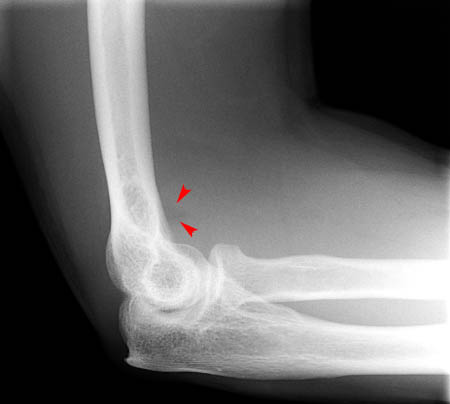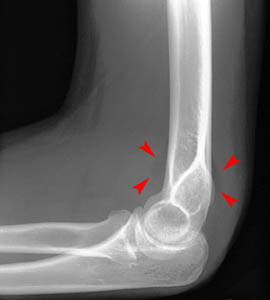Skeletal Trauma > Elbow > Radial Head Fracture
Radial Head Fracture
![]()
Radial Head Fracture
| |
| In the image below, look carefully for the sail sign. Being able to find this abnormality is helpful for diagnosing many radial head fractures. | |

| |
|
Lateral view of elbow showing sail sign | |
| Now look very carefully at the radiographs below. Notice that in the image on the left, both anterior and posterior fat pad signs are present. This should increase suspicion of a fracture. However, no fracture is apparent in this radiograph. The image on the right shows a different view taken from the same patient. In this view the radial head fracture is apparent. | |

|

|
|
Lateral view of elbow |
Oblique view of elbow |
